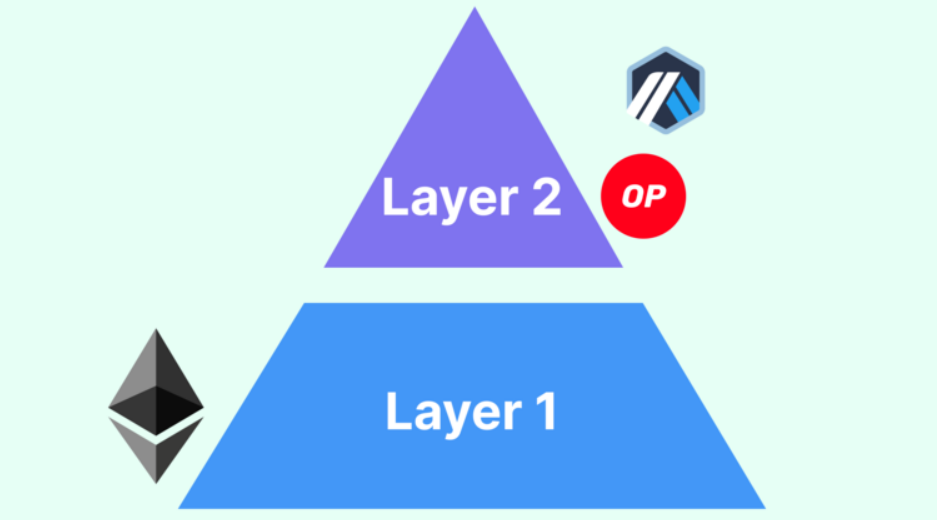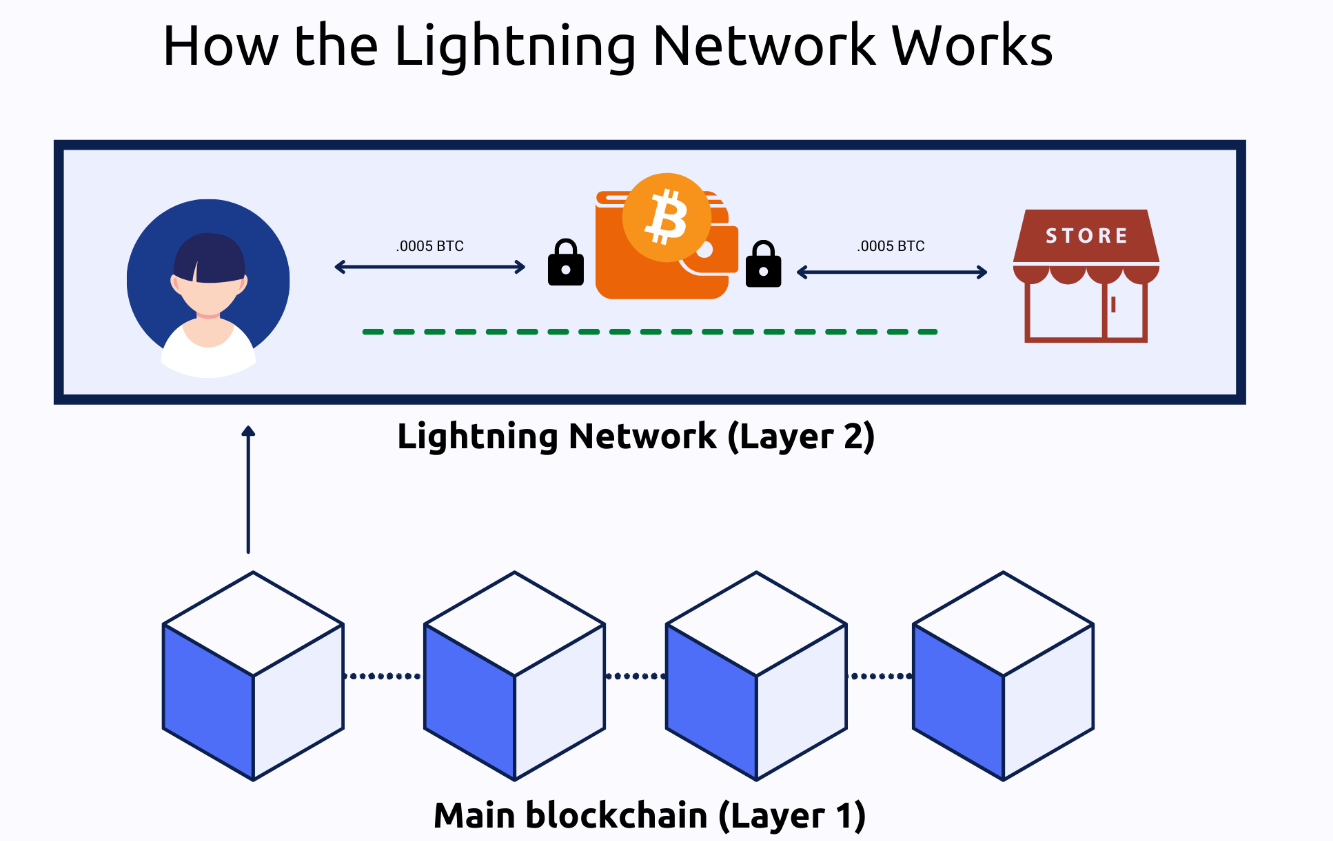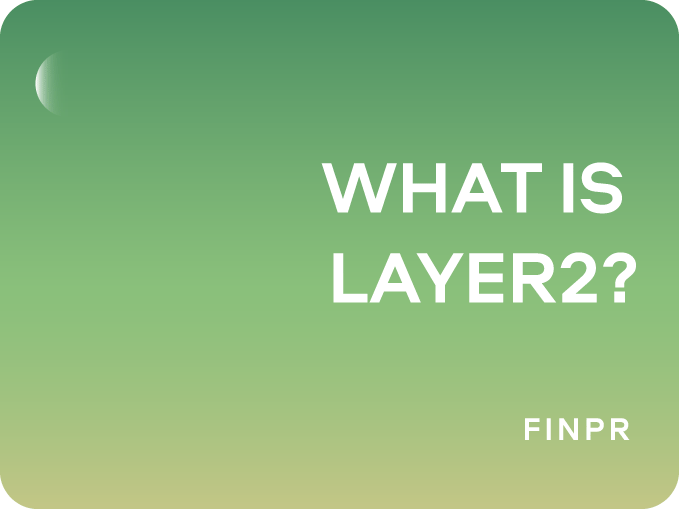
Since Bitcoin's launch in 2009, blockchain technology has revolutionized how we think about decentralization, security, and transparency. Yet, as blockchain networks like Ethereum and Bitcoin have grown, they've hit a major roadblock: scalability.
Enter Layer 2 solutions. These innovations enhance blockchain capacity by building on existing networks, making transactions faster and cheaper without sacrificing security or decentralization.
In this article, we'll explore Layer 2 solutions, their benefits, and the problems they solve. We'll also highlight successful projects and discuss the future of Layer 2 in the blockchain world. Understanding these solutions is key to seeing how blockchain can grow and meet global demands.
Understanding Layer 2 Technology
To fully grasp the concept of Layer 2 technology, it's essential to understand its foundational role in enhancing blockchain networks. Layer 2 solutions are built on top of the base layer, or Layer 1, which includes the main blockchain protocols like Bitcoin and Ethereum. These solutions aim to improve the network's scalability and efficiency without altering the core structure of the underlying blockchain.
Definition of Layer 2 Solutions
Layer 2 refers to a set of off-chain or secondary protocols that operate on top of the primary blockchain layer. These solutions facilitate faster and cheaper transactions by handling them off the main chain while still benefiting from the security and decentralization of the base layer. Essentially, Layer 2 solutions allow for a higher volume of transactions to be processed in parallel to the main blockchain, easing the congestion and reducing costs associated with Layer 1 transactions.
Distinction Between Layer 1 and Layer 2

Layer 1, the base layer, consists of the fundamental blockchain protocol responsible for transaction validation, consensus mechanisms, and network security. This layer includes the core features that make blockchain networks decentralized and secure. However, Layer 1 has inherent limitations in scalability due to its design, which prioritizes security and decentralization.
Layer 2 solutions, on the other hand, operate above Layer 1, providing mechanisms to process transactions more efficiently. While Layer 1 handles consensus and data security, Layer 2 solutions focus on scaling the network by processing transactions off-chain or in a more optimized manner. This division allows Layer 1 to maintain its integrity while Layer 2 addresses scalability and performance issues.
Importance of Layer 2 in the Blockchain Ecosystem
The importance of Layer 2 solutions in the blockchain ecosystem cannot be overstated. As blockchain technology gains traction and more users adopt it for various applications, the demand for scalable and efficient networks grows. Layer 2 solutions offer several key advantages:
- Scalability: By offloading transaction processing from the main chain, Layer 2 solutions significantly increase the number of transactions that can be handled simultaneously, addressing the bottlenecks that plague Layer 1 networks.
- Reduced Transaction Costs: Processing transactions off-chain or through more efficient protocols reduces the fees associated with each transaction, making blockchain more accessible and practical for everyday use.
- Faster Transaction Speeds: Layer 2 solutions enable near-instant transaction confirmations, enhancing the user experience and enabling real-time applications.
- Security and Decentralization: Despite operating off-chain, Layer 2 solutions still rely on the security mechanisms of the underlying Layer 1 blockchain, ensuring that transactions remain secure and the network remains decentralized.
Layer 2 solutions are vital for the continued growth and adoption of blockchain technology. They address the critical issue of scalability while preserving the core principles of security and decentralization that are central to the blockchain ethos. As the blockchain ecosystem evolves, Layer 2 technologies will play an increasingly prominent role in enabling a wide range of applications, from financial services to supply chain management and beyond.
Notable Layer 2 Projects and Platforms
Layer 2 solutions are crucial for the continued growth and adoption of blockchain technology. Several projects and platforms have emerged as leaders in the development and implementation of Layer 2 solutions, each contributing unique innovations and advancements. This section highlights some of the most notable Layer 2 projects and platforms, detailing their features, use cases, and impact on the blockchain ecosystem.
Bitcoin's Lightning Network

Overview
The Lightning Network is a state channel-based Layer 2 solution designed to enable fast, low-cost transactions on the Bitcoin network. It allows users to create off-chain payment channels that can process multiple transactions instantaneously before settling the final balance on the Bitcoin blockchain.
Features and Use Cases
- Instant Payments: Enables near-instantaneous micropayments, making Bitcoin more practical for everyday transactions.
- Low Fees: Significantly reduces transaction costs by processing transactions off-chain.
- Scalability: Increases Bitcoin's transaction throughput, making it capable of handling millions of transactions per second.
Impact
The Lightning Network has made Bitcoin more efficient and accessible, addressing some of the key limitations of the Bitcoin blockchain. It is particularly beneficial for applications requiring rapid transaction confirmation and low fees, such as microtransactions and retail payments.
Ethereum's Optimism and Arbitrum
Overview
Optimism and Arbitrum are leading implementations of Optimistic Rollups, a type of Layer 2 solution for Ethereum. They aim to scale the Ethereum network by moving the bulk of transaction processing off-chain while maintaining security through fraud proofs.
Features and Use Cases
- Scalability: Dramatically increases Ethereum's transaction throughput by processing transactions off-chain.
- Cost Efficiency: Reduces gas fees by bundling multiple transactions into a single batch.
- Compatibility: Fully compatible with existing Ethereum smart contracts and decentralized applications (dApps).
Impact
Optimism and Arbitrum have played a crucial role in alleviating congestion on the Ethereum network, making it more efficient and cost-effective. They support a wide range of dApps, from DeFi platforms to NFT marketplaces, enabling broader adoption and innovation.
Polygon (formerly Matic Network)
Overview
Polygon is a multi-faceted Layer 2 platform that combines various scaling solutions, including Plasma chains, rollups, and sidechains, to create a comprehensive scaling framework for Ethereum.
Features and Use Cases
- Versatility: Supports multiple scaling technologies, providing flexibility for developers.
- High Performance: Achieves high transaction throughput and low latency.
- Interoperability: Allows seamless transfer of assets and data between Ethereum and Polygon.
Impact
Polygon has become a go-to platform for developers seeking scalable and efficient solutions for their Ethereum-based projects. Its robust infrastructure supports a diverse ecosystem of dApps, from gaming to DeFi, driving significant growth and innovation in the blockchain space. Blockchain gaming is transforming the digital gaming landscape by introducing decentralized elements and true ownership of in-game assets.
zkSync
Overview
zkSync is a ZK-Rollup-based Layer 2 solution that leverages zero-knowledge proofs to ensure the validity of transactions, which are then verified by the Ethereum main chain.
Features and Use Cases
- Security: Provides strong security guarantees through zero-knowledge proofs.
- Scalability: Increases transaction throughput by bundling transactions off-chain.
- Cost Efficiency: Reduces gas fees, making transactions more affordable.
Impact
zkSync has made significant contributions to Ethereum's scalability and security, enabling faster and cheaper transactions without compromising on safety. It is particularly suited for applications that require high security, such as financial services and asset management.
Loopring
Overview
Loopring is a Layer 2 protocol based on ZK-Rollups, designed specifically for building scalable and efficient decentralized exchanges (DEXs) on Ethereum.
Features and Use Cases
- High Throughput: Supports thousands of transactions per second, enabling high-frequency trading.
- Low Fees: Minimizes trading fees by processing transactions off-chain.
- Decentralization: Maintains the decentralization and security of the underlying Ethereum network.
Impact
Loopring has revolutionized the DEX space by providing a scalable and efficient alternative to traditional centralized exchanges. Its innovative use of ZK-Rollups has set new standards for performance and cost-effectiveness in decentralized trading.
OMG Network
Overview
The OMG Network, formerly known as OmiseGO, utilizes the Plasma framework to enable scalable and secure value transfer on Ethereum.
Features and Use Cases
- Scalability: Offloads transactions from the Ethereum main chain, increasing overall network capacity.
- Security: Ensures transaction security through periodic commitments to the main chain.
- Cost Reduction: Lowers transaction costs, making it feasible for high-volume applications.
Impact
The OMG Network has enhanced Ethereum's scalability, particularly for financial applications that require high transaction throughput and low fees. Its use of Plasma technology has demonstrated the potential of Layer 2 solutions to address Ethereum's scalability challenges.
Celer Network
Overview
Celer Network is a Layer 2 platform that supports state channels and rollups to provide scalable and fast off-chain transaction processing for various blockchain networks.
Features and Use Cases
- Multi-Blockchain Support: Compatible with multiple blockchain platforms, including Ethereum and Polkadot.
- High Performance: Enables real-time, low-latency transactions.
- Broad Applicability: Suitable for gaming, DeFi, and other high-demand applications.
Impact
Celer Network has expanded the possibilities for scalable blockchain applications beyond Ethereum, providing developers with flexible and efficient tools to build and deploy high-performance dApps across different networks.
These notable Layer 2 projects and platforms highlight the diverse approaches being taken to address the scalability challenges of blockchain networks. Each project brings unique innovations and solutions, contributing to the overall advancement and adoption of blockchain technology. By enhancing scalability, reducing costs, and improving user experiences, Layer 2 solutions are paving the way for a more efficient and accessible blockchain ecosystem.
The Future of Layer 2
As blockchain technology continues to evolve, Layer 2 solutions are increasingly becoming central to addressing the scalability challenges faced by major blockchain networks such as Bitcoin and Ethereum. The future of Layer 2 is promising, with numerous advancements and trends shaping its development.
Advancements in Layer 2 Solutions
- Increased Adoption and Integration: Layer 2 solutions are gaining significant traction, especially in the realms of decentralized finance (DeFi) and non-fungible tokens (NFTs). Technologies like rollups (both optimistic and zero-knowledge) are being integrated into various platforms to enhance transaction throughput and reduce costs. Projects like Polygon, Arbitrum, and Optimism are leading the charge by providing scalable and cost-effective infrastructure for Ethereum.
- Zero-Knowledge (ZK) Technology: ZK technology is becoming a focal point in the Layer 2 landscape due to its ability to enhance privacy and efficiency. Zero-Knowledge Rollups (ZK-Rollups) allow for the verification of transactions without revealing the underlying data, significantly reducing storage requirements and increasing transaction speeds. Projects such as zkSync and Starknet are at the forefront of this innovation, offering robust solutions for Ethereum and other blockchains.
- Hybrid Solutions: The future of Layer 2 will likely see the emergence of hybrid solutions that combine the best features of different Layer 2 technologies. For example, combining the scalability of rollups with the instant finality of state channels can create more versatile and powerful scaling solutions. This hybrid approach aims to optimize both performance and security, catering to a wider range of applications.
Addressing Challenges
Despite the advancements, Layer 2 solutions face several challenges that need to be addressed for their widespread adoption:
- Interoperability: One of the main issues is the fragmentation of the ecosystem, where different Layer 2 solutions operate in silos, leading to poor user experience and liquidity fragmentation. Improving interoperability between Layer 2 solutions and with Layer 1 blockchains is crucial. Initiatives like shared sequencing and better bridging technologies are being developed to address these issues.
- Centralization Risks: Many Layer 2 solutions, especially rollups, currently rely on centralized sequencers to validate and order transactions. This centralization poses risks to the security and censorship resistance of these networks. Efforts are underway to decentralize these sequencers and implement mechanisms to ensure they act in the network's best interest.
- User Experience: For Layer 2 solutions to achieve mass adoption, the user experience must be seamless. This includes simplifying the processes of bridging assets, managing multiple wallets, and interacting with Layer 2 networks. Improved wallet integrations and user-friendly interfaces are essential to drive mainstream adoption.
The Road Ahead
Looking forward, Layer 2 solutions are expected to continue evolving, driven by the need for scalable, efficient, and secure blockchain infrastructure. As Ethereum progresses through its scaling roadmap, Layer 2 solutions will play a critical role in achieving the network's scalability goals.
As the Layer 2 ecosystem continues to grow, collaborating with top blockchain development companies can provide the expertise needed to implement scalable solutions effectively. The integration of Layer 2 with Ethereum's future upgrades, such as sharding and proof-of-stake enhancements, will provide a fertile ground for further innovation and cost reduction.




